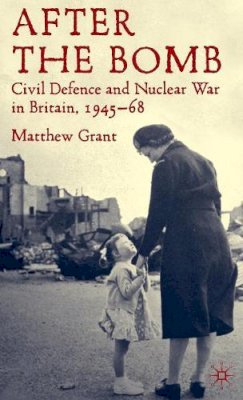
Stock image for illustration purposes only - book cover, edition or condition may vary.
After The Bomb: Civil Defence and Nuclear War in Britain, 1945-68
M. Grant
€ 149.99
FREE Delivery in Ireland
Description for After The Bomb: Civil Defence and Nuclear War in Britain, 1945-68
Hardback. Civil defence was an integral part of Britain's modern history. Throughout the cold war it was a central response of the British Government to the threat of war. This book will be the first history of the preparations to fight a nuclear war taken in Britain between the end of the Second World War and 1968. Num Pages: 260 pages, biography. BIC Classification: HBJD1; HBLW3; HBTK; JKSR; JWKW. Category: (U) Tertiary Education (US: College). Dimension: 225 x 148 x 20. Weight in Grams: 426.
Civil defence was an integral part of Britain's modern history. Throughout the cold war it was a central response of the British Government to the threat of war. This book will be the first history of the preparations to fight a nuclear war taken in Britain between the end of the Second World War and 1968.
Civil defence was an integral part of Britain's modern history. Throughout the cold war it was a central response of the British Government to the threat of war. This book will be the first history of the preparations to fight a nuclear war taken in Britain between the end of the Second World War and 1968.
Product Details
Format
Hardback
Publication date
2009
Publisher
Palgrave Macmillan
Number of pages
264
Condition
New
Number of Pages
249
Place of Publication
Basingstoke, United Kingdom
ISBN
9780230205420
SKU
V9780230205420
Shipping Time
Usually ships in 15 to 20 working days
Ref
99-15
About M. Grant
MATTHEW GRANT is University Teaching Associate in Modern British History at the University of Sheffield, UK.
Reviews for After The Bomb: Civil Defence and Nuclear War in Britain, 1945-68
"This book does an excellent job of showing the importance ascribed by several governments to the Cold war and planning for nuclear war." - Oxford Journals, Aug 2010 'Overall, Grant succeeds in placing the history of civil defence in its wider context by showing how the five factors he identifies interacted with each other. His ... Read more
